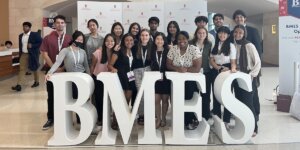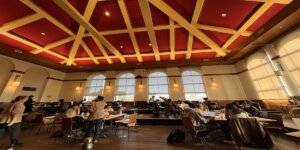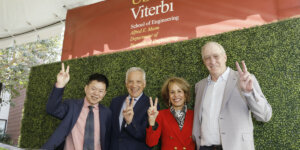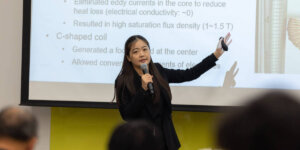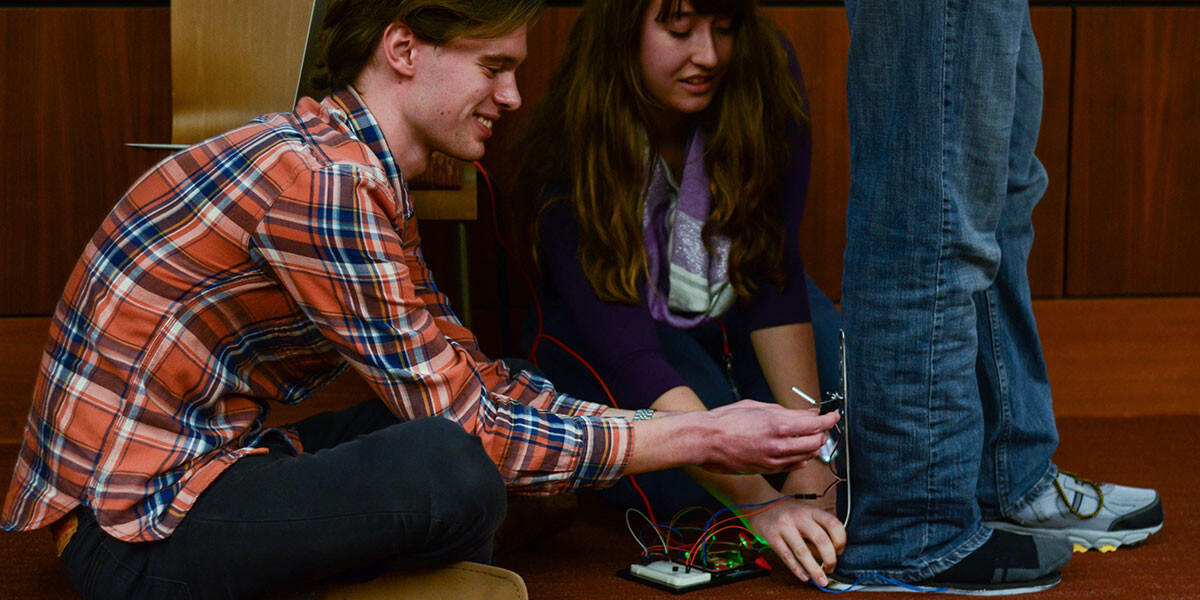
Students demonstrate their prototype biomedical device to treat peroneal nerve injury, or “foot drop” at the 2017 ASBME Makeathon. Photo credit/Peter Shin.
Despite the biggest storm to thrash southern California in five years, nearly 60 undergraduates showed up, shucking their umbrellas aside, to hone their bioengineering skills at Associated Students of Biomedical Engineering (ASBME) Makeathon 2017.
The event took place Friday, Feb. 17 through Sunday, Feb. 19 at the USC Ronald Tutor Campus Center.
Announced at Friday evening’s kick-off, this year’s challenge required teams to design devices for a neuromuscular disorder known as peroneal nerve injury or “foot drop”- all within a time crunch of 30 hours.
Foot drop has a variety of causes, like spinal damage and ALS, and prevents patients from lifting their ankle, so the toe doesn’t clear the ground while walking.
While many brace-like devices already exist for treatment, most are bulky, uncomfortable and/or expensive. Teams were encouraged to build a comfortable and affordable solution that restores natural gait, but also stabilizes the ankle, ensuring it doesn’t rotate back and forth.
In a spacious room called “The Forum,” the event was buzzing on Saturday afternoon with teams comprised of USC and California State University-Los Angeles undergraduates, all under pressure to prepare their initial CAD designs by 3:30pm. Between bites of late lunch burritos and gulps of caffeinated beverages, students huddled around laptops to finalize their group presentations.
About the annual event, Adam Seifert, USC ASBME president, said that Makeathon spawns fast friendships since each group is required to have two upperclassmen and one underclassmen with participants often unacquainted prior to forming teams.
“That’s an important part of giving people a real-world experience because when you’re working in an engineering team, you’re not going to know everyone,” Seifert said. “Everyone is going to have varying levels of experience and that’s all important to the experience that you’re going to be getting from something like this.”
In addition, the teamwork involved formed closer bonds between casual friends. Tilden Chima, a USC Viterbi upperclassmen whose group announced their presentation with a heartwarming, full-on “jazz hands” display, gave testament to the good vibes and camaraderie he felt in taking part.
“My experience coming here was sometime last afternoon when I got Facebook message from Daniel Yen (his peer at USC Viterbi),” Chima said. “For me, the excitement coming from him about me being on the team and being able to contribute something made me feel excited and like somebody wants my skills to do something to be able to change the world.”
After team presentations, a group of Ph.D. student mentors selected five finalist teams to move on to fabricate their devices in the USC Viterbi Fabrication Laboratory. This year’s competition gave teams the option to use both electrical and mechanical components, the former not allowed last year.
Overnight, teams toiled to submit their final devices by noon Sunday.
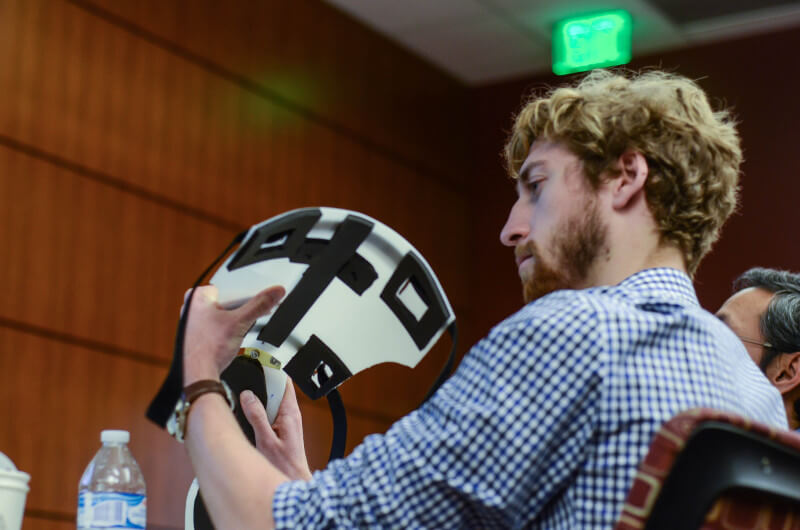
Ph.D. student and event mentor/judge Alex Baldwin evaluates a prototype at the 2017 ASBME Makeathon. Photo credit/Peter Shin.
That afternoon, a panel of judges comprised of USC faculty members chose the best devices in this order:
1st place: Taco Tuesdays (each member received a Raspberry Pi 3 microcomputer with starter sensor kit as well as $100)
2nd place: The Final Countdown ($100 each)
3rd place: The I-V Leaguers ($50 each)
Honorable Mentions:
ABC Make Something
Oriana’s BMEst
Team “Taco Tuesdays” received first place for engineering an orthotic with a pressure sensor in the heel of the sole. When the patient’s foot begins to lift, the sensor would activate a servo, an electronic motor, that rotates a metal pin to lock the ankle in place at the right angle to not drop while walking forward.
Then, at heel strike after the step, the sensor would be triggered again to unlock the brace, so the patient’s foot could again be placed on the ground.
Another new touch this year, the Raspberry Pi 3 microcomputer awards were introduced to promote the “Maker Spirit,” since they make great engineering DIY projects, Seifert said.
This enthusiastic spirit was evident throughout the competition. A 2016 participant and member of this year’s “The STEMinists” team, USC Viterbi sophomore Sarah Milkowski said she came back to Makeathon because she had such a great time last year, claiming it “a blast.”
“I think [it’s] a great opportunity to look at things like, ‘this is a great idea. This could be totally wrong, but we’re going to try it,’” said Milkowski, a biomedical engineering major. “They say you learn from failures more than successes, and this is such a great opportunity for that.”
Published on February 28th, 2017
Last updated on June 14th, 2018




